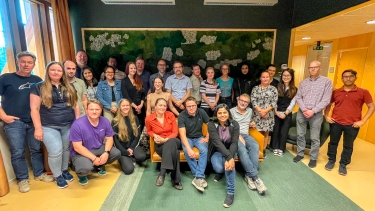Optimizing the contribution of forests to mitigating climate change

A report from EFI provides new recommendations for how to optimize the contribution of forestry and the forest sector to mitigating climate change.
Forests and forestry play a key part in the global carbon cycle and are central to efforts to achieve the 2015 Paris Agreement goals and limit global temperature increases by reducing greenhouse gas emissions. Forests provide natural carbon sinks and their products can substitute for emissions-intensive materials, thereby reducing emissions. But as well as carbon sequestration and storage, forests are of key importance to biodiversity and provide a wide range of benefits to society - the maintenance and improvement of these functions is a fundamental part of sustainable forest management.
Quantifying how these multiple forest roles interact is not simple, and there is relatively limited understanding of the issue, especially in the public debate. For example, the carbon balance of forest landscapes is affected by many factors, including changes in the intensity of biomass harvest.
The report presents an overview of the carbon dynamics in managed forests where harvest takes place, the climate contribution of harvested wood products, and how forests and the forest-based sector can contribute to climate change mitigation through Climate-Smart Forestry.
It concludes that the contributions of forestry and the forest sector to mitigating climate change could be optimized by:
-
Taking a holistic approach that considers carbon storage in forest biomass, soil and wood products, substitution effects, as well as potential leakage effects. Sustainable, climate-smart forest management must ensure the current and future supply of raw materials, protect and improve biodiversity, and preserve soil and water quality, for a balanced contribution to all ecological, economic and social functions.
-
Strengthening forest carbon sequestration in managed forests by stimulating forest productivity (e.g., tree species and provenance selection, thinning and harvest regimes) and by strengthening the resilience of forests to climate change (e.g., by increasing species diversity). This should be achieved by sustainable forest management practices that are locally relevant and which consider future climate conditions.
-
Policymakers and forest managers considering carbon storage both in the short and the long term. Reducing wood harvest increases carbon storage in forest ecosystems in the short term, and may bring benefits to biodiversity, soil and water quality. However, it may compromise economic benefits from forests, and the increase of carbon storage is valid until the forest carbon sink saturates. Forest management should also consider that natural disturbances such as storms, wildfires and pests are expected to increase under climate change conditions, having immediate economic impact on wood applications and eventually leading to carbon release to the atmosphere.
-
Following the principles of cascade use for the sustainable use of wood for materials and products. In this approach wood is used, reused and recycled, thereby extending the material’s lifetime within the system. In addition, wood should be used for products that store carbon for as long as possible, and for products that provide large substitution benefits by avoiding emissions.
-
Forest-based bioenergy has a role in the transition of the energy sector towards emissions-free energy production. When using woody biomass for energy purposes, preference should be given to post-consumer wood and forest residues that are not suitable for the production of other materials and which do not lead to additional harvest.
More information
Blasius Schmid, Fredric Mosley, Mariana Hassegawa, Pekka Leskinen and Pieter Johannes Verkerk. 2021. Forest-based bioeconomy and climate change mitigation. European Forest Institute.
Download the materials
- Full report
- Executive Summary of the EFI report: in English; in Swedish; in Finnish
- Q&A about the EFI report
The Bioeconomy 2.0 - Bio resources in the transition to net-zero EU GHG emissions project has been carried out by the European Forest Institute in collaboration with Material Economics. Financial support has been provided by the Finnish Innovation Fund Sitra.
https://efi.int/projects/bio-economy-20-bio-resources-transition-net-zero-eu-ghg-emissions


